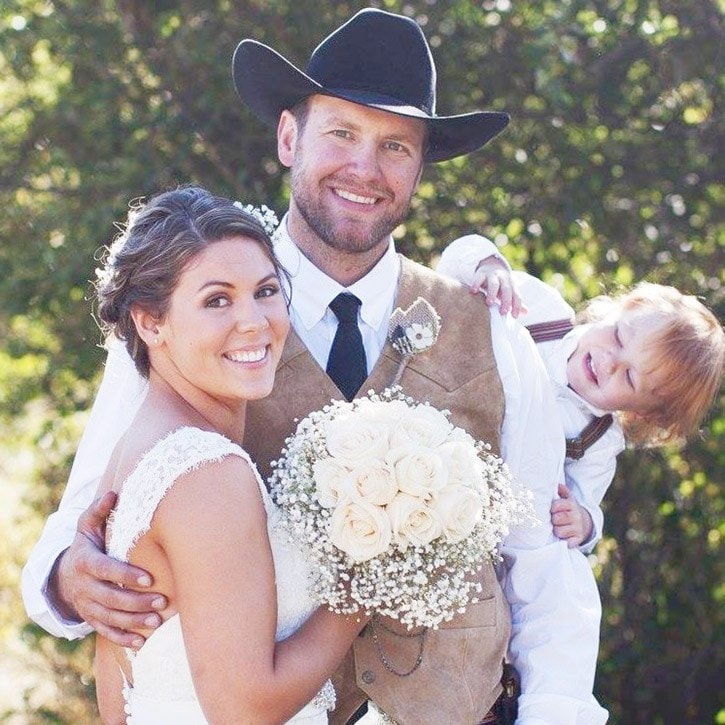A Horsefly couple is preparing to spend a few months in Vancouver after learning they are expecting a rare type of twins.
“We found out we were having twins and in recent weeks discovered that we’re having mono-mono twins,” Shelby Goodvin told the Tribune.
“It was a big shock for us. There’s not much we can do about it, but deliver the babies early if they are in trouble.”
Mono-mono twins, technically known as Monoamniotic-Monochorionic, are extremely rare because they share one placenta and amniotic sac throughout the pregnancy.
Each twin does have its own umbilical cord though.
These type of twins develop when one egg and one sperm form one cell mass that eventually splits into two.
Depending on when the splitting happens, and how much of the placenta and membranes have developed before the split occurs, is when variations such as Monoamniotic-Monochorionic twins develop, said Dr. Ken Lim, division head of maternal medicine at UBC and B.C. Women’s Hospital in Vancouver.
“If the split happens when the amniotic (inner layer) and chorionic (outer layer) sac has already developed, meaning there is a single sac, then the cell mass splits into two babies and they live in the same sac,” Lim said.
Normally twins are already at risk for usual complications such as prematurity, diabetes and high blood pressure, but for mono-mono twins there are added risks.
“Because they live in the same sac they are at risk of wrapping their umbilical cords around each other and having a still birth,” Lim said.
“Think of your umbilical cord as your life line. If you twist your air hose around each other over and over again you could actually cut off supply.”
Lim likened it to the twins sharing a sleeping bag where they roll around and bump into each other.
Shelby is in the 22nd week of her pregnancy.
Last Monday the Goodvins attended a consult appointment at B.C. Women’s where Shelby had an extensive ultrasound.
“We saw their legs were criss crossed and all four feet in the same spot,” Shelby said.
“It was also confirmed that their cords are entangled, which is to be expected.”
They were told the boys are healthy and both weigh one whole pound.
At 26 weeks the family will go to Vancouver so Shelby can be monitored daily at B.C. Women’s.
She will have to go to the hospital twice a day for fetal heart rate monitoring. The twins’ growth will be checked every two weeks by ultrasound.
The blood flow in their umbilical cords will be checked one to three times a week, also by an ultrasound technique.
The doctors are suggesting they deliver by C-section between 32 to 34 weeks depending on how everything is going, Shelby said.
Choosing when to deliver can be a catch-22, Lim said.
“We are watching for signs that their cords are tangling.
“The longer you wait and leave them in, the higher the risk of that happening, but on the other hand you don’t want to take them out too soon as you’ve got risks of prematurity.”
Carrying these types of twins is a very nerve-wracking experience for parents, he added.
“Unfortunately we can’t predict when stillbirths can happen, the technology just isn’t good enough. It’s a very difficult balance.”
This is Shelby’s second pregnancy as the Goodvins have a two-year-old son named Holden.
Shelby said it was the difference in the two pregnancies that first made her concerned that something might be amiss.
“We had an emergency ultrasound at nine weeks because I was so sick,” she said.
During the ultrasound, they found one healthy baby, so Shelby and Greg were under the assumption they were having one baby for a long time.
“But it turns out the second baby was hiding behind the other baby which is why it wasn’t recognized until about 18 weeks,” Shelby said.
Lim said mono mono twins are one per cent of all twin pregnancies.
The twin rate varies in B.C. from year to year because of in vitro fertilization and other technologies, he said.
There are roughly 40,000 to 45,000 deliveries in B.C. a year and about 1,000 twin pregnancies, with five to 10 of those being mono mono twins.
“We probably see one to three in our hospital because other places manage them,” Lim noted.
When the Goodvins go to Vancouver, Greg plans to take a leave from his job at Mount Polley Mine. They will stay at Ronald McDonald House because it is close to the hospital.
“If we make it until then we can expect around a six-week NICU stay after the boys are born, pending complications,” Shelby said.
To help the Goodvins with costs during the next few months, family has created a GoFundMe at https://www.gofundme.com/doublethe-fun.
